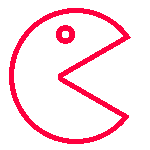Technical
Solving problems with collaborative workshops
Here at IE Digital we use workshops throughout our client projects to engage with a range of stakeholders, collaborate, and ultimately solve problems. Nick, one of our Digital Consultants, explains the benefit of this approach, especially when there are complex problems to be solved.

When there are big challenges to overcome, project meetings can sometimes leave you feeling like you’re going round and round in circles.
Unless you structure your meetings really well they can be inefficient, leave everyone on the team feeling like they haven’t accomplished anything, and produce a long list of actions for you all to complete in isolation.
But there is another way!
Turn a meeting into a workshop
You can give your meetings an energy boost by ensuring they are:
- Focused with clear goals
- Well-structured with a methodology for achieving the goals
- Interactive with hands-on collaborative activities
- Actionable with results that solve a problem
If you get these four factors right, you’ll have turned a mediocre meeting into a wondrous workshop, where things actually get done – not just discussed. This doesn’t mean abandoning traditional meetings altogether, or that every time two or more people meet they have to be armed to the teeth with post-its, stickers, and marker pens. However, when there’s anything more than a simple problem to solve, do justice to the solution by getting some heads together to work it out. For a successful workshop you’ll need to keep things interactive, with a good set of tools to encourage participation, activities to engage participants, and facilitation techniques to keep things focused.

Workshops are used in lots of disciplines and sectors. Here at IE, we use workshops throughout the lifetime of our brand and digital products, both internally and with clients. From project kick-off meetings to user testing and launches, we use workshops to generate great ideas, gain mutual understanding, obtain immediate and quality feedback, draft deliverables, reach decisions faster, and appreciate the intricacies of a problem we’re wrestling with. But most importantly: we use workshops to collaborate.
Multi-disciplinary co-creation workshops
When you bring together a group of people from multiple disciplines, in a structured workshop environment, you benefit from diverse – sometimes polarised – perspectives on a problem. Compared with a siloed approach, this can be a great way to problem-solve, allowing you to surface the most well-thought-through, high quality ideas or decisions. This environment – if facilitated well – allows people to collaborate and communicate in the most effective way.
Get your workshop right, and everyone should leave the session feeling energised and accomplished, knowing that their views have been heard, instead of fatigued and worried about things to do or more problems to solve. That’s not to say that all of your problems will be solved as long as you have enough sticky notes on your wall. However, materialising thoughts and decisions in this way gets us further towards our goals – resulting in a more tangible outcome.
As individuals at IE, we remind ourselves that we do not always know best – we pride ourselves in uncovering and then translating the findings of a workshop, research or meeting into a brand or digital solution. So collaborate with people to solve problems, and collaborate with the right people.
Forward planning for a successful workshop
Workshops are pivotal exercises, and can also be quite time-consuming, so good planning is of paramount importance to get the most value from the time your team spends together. A good workshop plan will cover:
- The purpose: the goals of the workshop and what questions need answering
- The people: who should attend
- The process: what activities will be used to answer the questions.
There’s always a danger of things going awry and veering away from the plan, but the simple act of blue-sky planning means you can plan for failure too. With so many different perspectives and complex problems in a room, it would not be uncommon for things to go pear-shaped, or for there to be conflict that needs resolving. When that happens, you can always refer back to your plan and the original purpose of the workshop to avoid going off on a tangent. To increase productivity, use constraints and ground rules when running your workshop, stick to your planned goals and always keep things moving. For example, if you’re generating new ideas on how to improve a product, encourage people to be open and put the focus on quantity rather than quality to keep creativity up. Good plans should have fallbacks built in and whoever is facilitating the session should be open to adapting throughout the workshop.
Concluding a successful workshop
It’s important to finish your workshop well. Be sure to highlight the value the workshop has delivered, capture all of the outcomes, next steps and any follow-up actions, making sure these are communicated clearly to all participants.
Now, go forth and make your meetings better with a good balance of interactivity, purpose and structure. Remember that meetings are where people talk about getting things done; workshops are where people get things done!
Here at IE, we use workshops throughout the lifetime of our brand and digital products, both internally and with clients. Meetings are where people talk about getting things done; workshops are where people get things done!
Nick O'Sullivan
Digital Consultant, IE Digital


